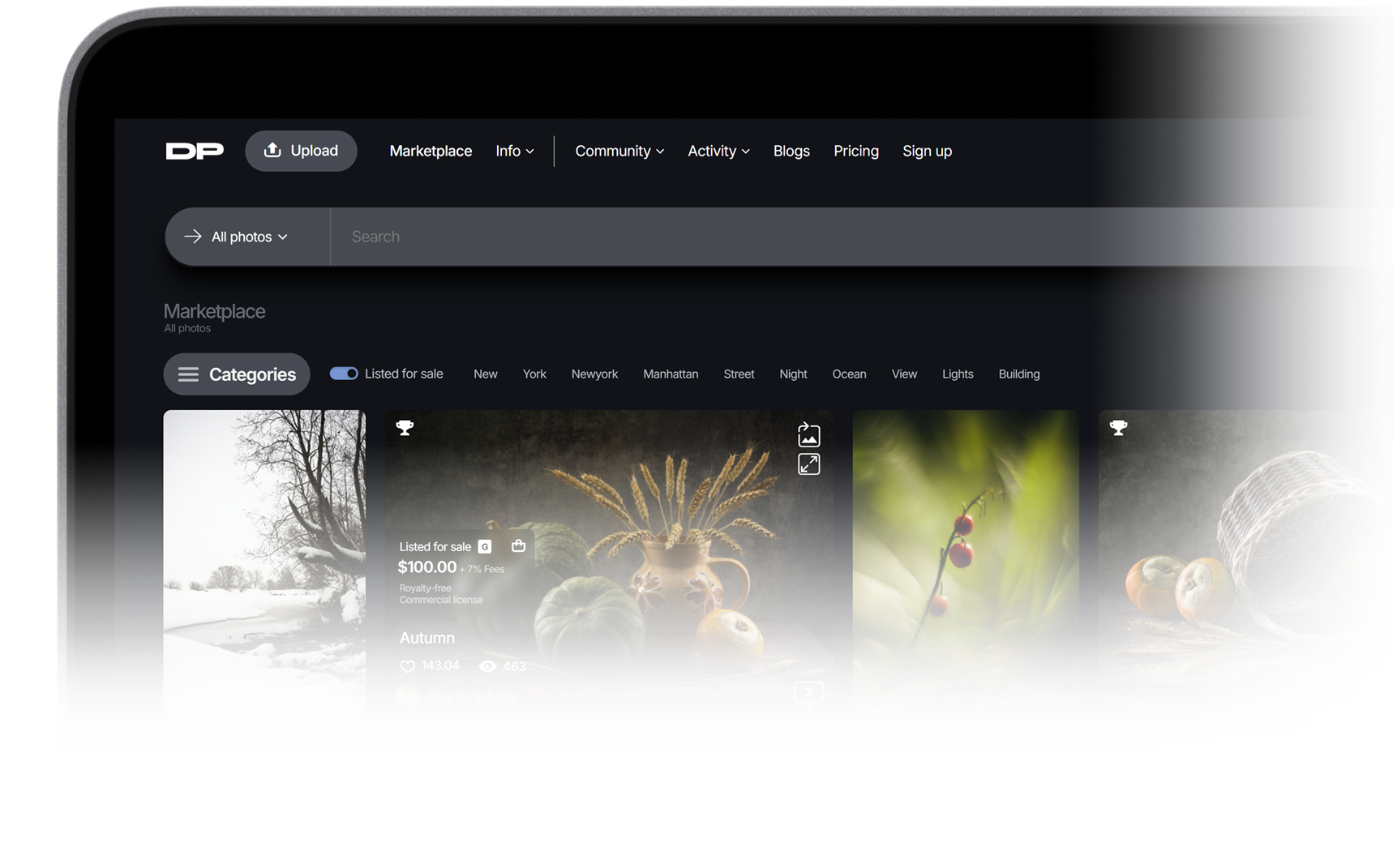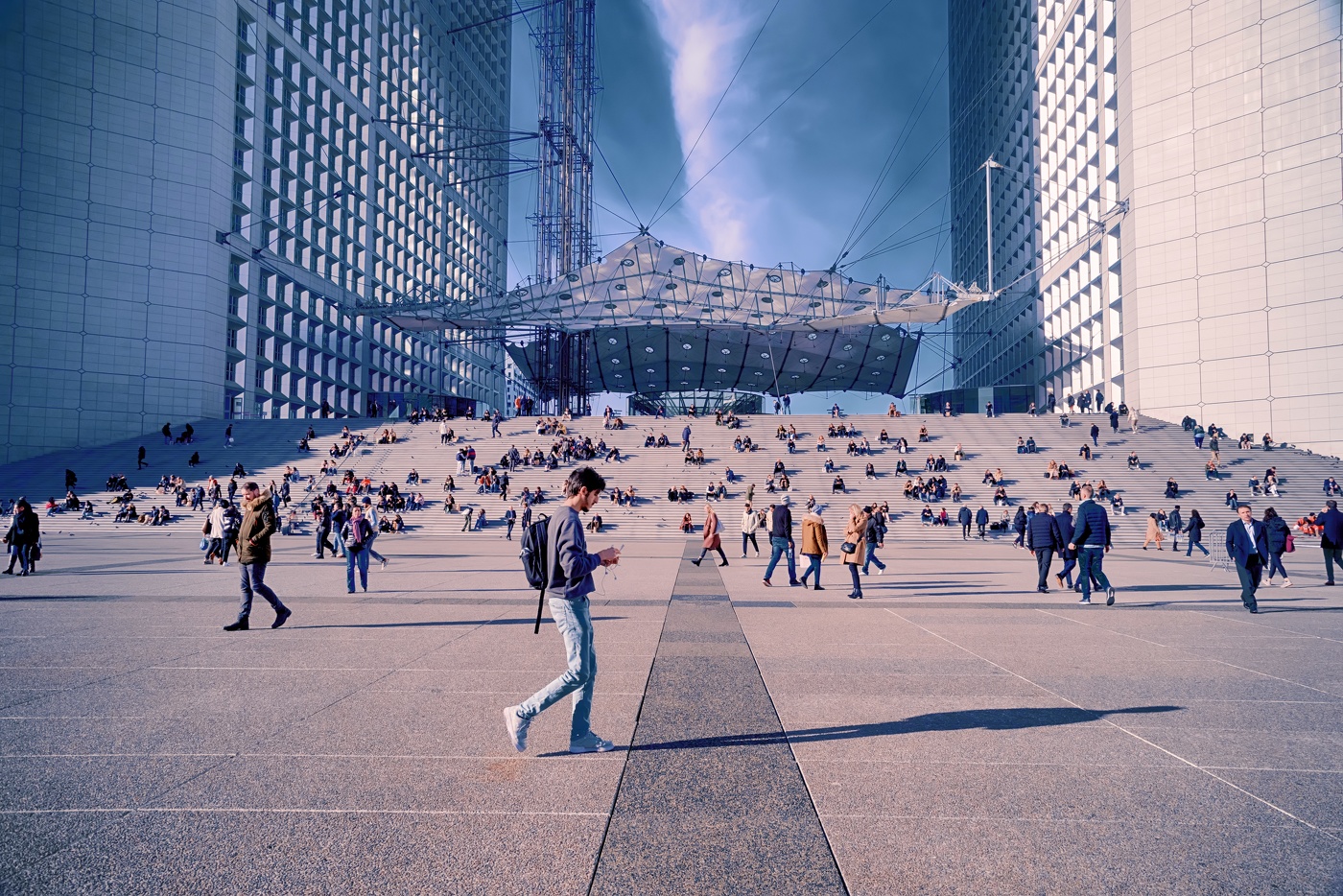
The digital license, represented by an NFT token, not only empowers creators but also provides buyers with irrefutable proof of the legal use of the purchased photo. DEX's marketplace operates on the gasless Layer 2 IMX protocol. This means that creators can mint digital licenses in the form of NFT tokens without incurring gas fees. The freedom to create numerous NFT tokens at no cost is a significant advantage
Regardless of the protocol of the digital license, buyers can always validate the legality of their purchase. Additionally, Layer 2 tokens can be seamlessly withdrawn to Ethereum, transforming them into regular Layer 1 NFT tokens when needed. Creators can effortlessly add and sell a multitude of their works at full value, with the added benefit of receiving PHOTO tokens through an airdrop bonus. This unique approach sets DEX.Photos apart as a trailblazer in the NFT marketplace, offering a more empowering and cost-effective solution for both creators and buyers
Creators joined
Artworks uploaded
Photography marketplace
DEX.Photos empowers creators with 100% gas-free NFT minting and full sales revenue retention.
Explore the benefits of NFT
Non-Fungible Token
NFTs are tokens that we can use to represent ownership of unique items. They let us tokenise things like art, photos, collectibles, even real estate. They can only have one official owner at a time and they're secured by blockchain – no one can modify the record of ownership or copy/paste a new NFT into existence.
NFT stands for non-fungible token. Non-fungible is an economic term that you could use to describe things like your furniture, a song file, or your computer. These things are not interchangeable for other items because they have unique properties.Fungible items, on the other hand, can be exchanged because their value defines them rather than their unique properties. For example, ETH* or dollars are fungible because 1 ETH* / $1 USD is exchangeable for another 1 ETH* / $1 USD.
*ETH is a cryptocurrency of the Ethereum blockchain network More on ETH
Learn more about NFT
technology. Minting your photo as NFT and listing it for sale is completely FREE on Immutable X's gasless Layer 2
*ETH is a cryptocurrency of the Ethereum blockchain network More on ETH Learn more about NFT
Photo marketplaces take most of your profits by paying creators between 15% and 40%
Distinguishing itself from other marketplaces, DEX.Photos ensures that you receive the entire photo price directly into your wallet immediately. This guarantees you a 100% payout, even if you sold just one photo
Additionally, photographers will be insentivised with PHOTO tokens* for minting their work (check Creators Incentive Program below)
*The reserve of 20,000,000 (40%) PHOTO tokens is allocated for the first up-loaders, as indicated in the chart below
Creators Incentive Program
Upload and mint 2 photos to the NFT photo marketplace and receive 1 PHOTO* token as a reward upon approval, available for the first 10,000,000 photos. Subsequently, contributors will earn 1 PHOTO* token for every four photos submitted, up to the next 20 million photos. A total of 20,000,000 tokens will be distributed to incentivize and reward photographers. The distribution of tokens will follow the outlined chart *Creators will receive 1 PHOTO token or a maximum of $1 in PHOTO tokens if the token price is higher
Fixed Supply
Limited to a total of 50,000,000 PHOTO tokens in existence. The platform will utilize all fees, including a 5% fee for buyers, for token buybacks, enhancing value for token holders
Incentivizing Community Activity
A 50% allocation of PHOTO tokens is set aside to encourage community engagement through various activities, including photo uploads, participation in contests, and involvement in marketing initiatives
PHOTO Tokens Distribution
Token Locking & Vesting Schedule
70% of the tokens (excluding pre-sale and liquidity allocations) will be locked for 12 months via UNCX. After the initial lockup period, the tokens will be gradually released through quarterly vesting over the following two years to support sustainable growth. For full transparency, these details can be verified on the UNCX Locker
Liquidity Locking
To ensure stability and long-term trust, 50% of the funds raised during the Initial Liquidity Offering (ILO) will be securely locked in the liquidity pool for a one-year period
Immutable X Layer 2 Technology
Built on the robust Ethereum Network, Immutable X is a Layer 2 protocol for providing security, liquidity, and scalability when buying and trading NFTs. It leverages the power and security of the Ethereum blockchain to give users faster transactions, massive scalability (9,000 TPS), and zero gas fees – without ever compromising user ownership
BACKED BY







Key Highlights of Immutable X
Scalability
Immutable X can process up to 9,000 transactions per second, which is much higher than the throughput of Ethereum Layer 1
Low fees
Immutable X NFT fees are very low, making it a cost-effective way to mint, transfer, and trade NFTs
Security
Immutable X is a highly secure platform, using StarkWare’s zkRollup technology to verify transactions without revealing the underlying data
Instant transactions
Immutable X transactions are processed instantly, without the need to wait for confirmations
Zero gas fees
Immutable X transactions do not require gas fees, making them a more affordable option for users
Carbon neutrality
Immutable X is committed to being carbon neutral, and offsets all of its emissions
More on Immutable X
How To Join?
Unlock New Opportunities with Our Platform
Whether you're looking to sell stock and art photos, earn passive income through liquidity provision, or join a thriving creative community, our platform offers the perfect tools to grow and monetize your work
Stock & Art Photographers
Upload your photos to the NFT Marketplace, make money by selling your images, and receive PHOTO tokens as rewards.
Dive into the marketplace to discover more opportunities
Liquidity Providers
Lock your tokens in the liquidity pool to earn a % on Uniswap with each exchange
Join Photo Community
Join the photo community to engage in discussions, find inspiration, receive recommendations, and get feedback on your artwork by uploading photos
Discover the vibrant world of the photo community
Presale Date to be Announced...
https://app.uncx.network/amm/uni-v2/ilo/0x192be174C3f6A92fED170054b419c34Fd178d676All Tokens Locked
All tokens will be locked by the presale dateTelegram Group
https://t.me/photocentracomPHOTO Token Contract Address
https://etherscan.io/token/0xf31fc7260c433389f223b8a80ecbe73740eaa0edJoin DEX.Photos Now
DEX.Photos invites visionary photographers to our exclusive decentralized ecosystem – where art meets blockchain technology. Be among the first to mint and showcase your work
Project Roadmap 🗓️
The marketplace is connected and running a Level 2 solution from Immutable X making photo minting free for creators without depending on large gas payments
Non-fungible Tokens (NFT) FAQ
What's an NFT?
NFTs are tokens that we can use to represent ownership of unique items. They let us tokenise things like art, photos, collectibles, even real estate. They can only have one official owner at a time and they're secured by blockchain – no one can modify the record of ownership or copy/paste a new NFT into existence NFT stands for non-fungible token. Non-fungible is an economic term that you could use to describe things like your furniture, a song file, or your computer. These things are not interchangeable for other items because they have unique properties Fungible items, on the other hand, can be exchanged because their value defines them rather than their unique properties. For example, ETH* or dollars are fungible because 1 ETH* / $1 USD is exchangeable for another 1 ETH* / $1 USD*ETH is a cryptocurrency of the Ethereum blockchain network More on ETH
How do NFTs work?
- Each token minted has a unique identifier
- They're not directly interchangeable with other tokens 1:1. For example 1 ETH is exactly the same as another ETH. This isn't the case with NFTs
- Each token has an owner and this information is easily verifiable
- They live on blockchain and can be bought and sold on any blockchain-based NFT market
- You can easily prove you own it
- No one can manipulate it in any way
- You can sell it, and in some cases this will earn the original creator resale royalties
- Or, you can hold it forever, resting comfortably knowing your asset is secured by your wallet on blockchain
Why is this important for photographers? 
The biggest use of NFTs today is in the digital content realm. That's because that industry today is broken. Content creators see their profits and earning potential swallowed by platforms
An artist publishing work on a social network makes money for the platform who sell ads to the artists followers. They get exposure in return, but exposure doesn't pay the bills
NFTs power a new creator economy where creators don't hand ownership of their content over to the platforms they use to publicise it. Ownership is baked into the content itself. When creators sell their content, funds go directly to them
If you create or buy an NFT
- You can easily prove you're the creator or owner
- You determine the license type
- You can earn royalties every time it's sold (if supported by the platform)
- You can sell it on any NFT market or peer-to-peer. You're not locked in to any platform and you don't need anyone to intermediate
All you need to do is set up an Ethereum wallet such as Metamask. You will be able to connect your account to the site and receive payments from your photo sales directly to your wallet. How to setup MetaMask








